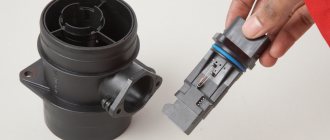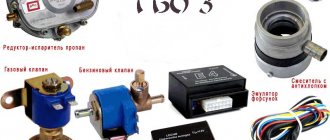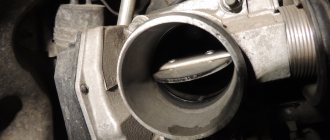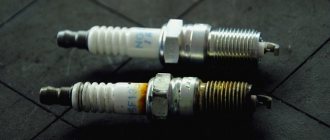The automotive industry has gone through many design variations in its history. Starting from the classical scheme, engineers went through promising ideas and produced unusual cars with an unusual look. There were rear-engine bodies with the cabin pushed forward. There were mid-engine minivans, etc. Some of these designs have found application in trucks, buses or sports cars, but in mass-produced passenger cars there are two layouts: with a longitudinal engine and a transverse one.
Article on the topic The Age of Motors. Why were the first engines inferior in popularity to horse traction?
Shaft and box in the cabin
The longitudinal design is considered classic and is often equipped with a rear-wheel drive transmission. At the beginning of the last century, at the dawn of mass automobile production, engineers decided to place the engines in the front of the car, and the cabin was located behind the engine compartment. In this case, the shaft from the engine went into the gearbox, which was mounted under the feet of the driver and front passenger. The rear axle with shafts and gearbox balanced the power unit, and the car as a whole, together with its passengers, was a balanced structure with an even distribution of weight throughout the body. Such a car behaved well in corners, stabilized perfectly when skidding, and handled relatively well even in difficult situations on a slippery road. The only drawback of this arrangement was the lack of free space in the cabin.
In the 20s, to reduce the center of mass, the cabin was lowered down, and the transmission and gearbox were placed inside the body. As a result, a large central tunnel was formed in the car for the driveshaft and a stamping for the gearbox, which protruded between the driver and passenger. And the free space in the trunk was “eaten up” by the rear axle. In general, the car could not accommodate an insufficient number of things and had a cramped interior, even with its huge dimensions. The American auto industry has followed this path. But the huge “dreadnoughts” did not fit in cramped European cities. Designers had to come up with something special for the markets of the Old World.
Article on the topic
Tricks with a motor. How an AiF.ru correspondent assembled a Ford
Longitudinal engine arrangement
The scheme in which the power unit in the car is installed longitudinally, that is, along the axis of the entire structure, is considered classic. Previously, as now, this arrangement was used for cars equipped with rear-wheel drive, and also often on all-wheel drive vehicles. Also, longitudinal engine installation is used for powerful sports cars (with rear-wheel drive, of course). In this case, the engine compartment is often located in the rear or middle part of the body.
When the engine is located longitudinally, the thrust from the crankshaft to the gearbox is transmitted along the most direct path, which means with minimal losses. However, difficulties naturally arise with how to realize the full efficiency of traction.
After all, the rotational energy transmitted via the driveshaft to the rear wheels has to be redirected at an angle of 90 degrees, which is done through the differential. That is, additional elements are introduced into the design, which affects both the cost of the machine and its weight. Weight, in turn, affects fuel consumption.
Another disadvantage, at least for modern cities with heavy traffic and busy streets, is the increase in body size due to the engine compartment. If the external dimensions are not increased, then the space in the cabin will have to be reduced, thereby reducing comfort for passengers and the driver.
First Mini
Fuel shortages and high oil prices required an increase in vehicle efficiency. This was achieved by reducing engine volume. But the tiny engine could only accelerate a lightweight compact body.
In general, after many years of searching, a front-wheel drive design with a transverse engine arrangement was developed. It was first implemented in Mini cars in 1957 and then spread widely throughout the world.
Designer Alec Issigonis from the British Motor Corporation made the Mini front-wheel drive, and to save space in the cabin, he turned the engine across the movement and pushed it into the space between the bumper and the driven front axle. The driveshaft disappeared, and the other transmission mechanisms moved under the hood and connected to the front wheels. Thus, all the equipment was located in the front overhang, and the interior was provided for practical needs.
The producers liked the idea. A tiny car of low mass could have a very spacious interior. The Mini easily accommodated four people.
Mini interior layout. Photo: Commons.wikimedia.org/geni
Transverse engine
In this case, the power unit is installed under the hood perpendicular to the axis of the car body. Currently, a transverse engine arrangement is used in most cases. Even among sports cars and supercars there are, although quite rarely, designs with just such an arrangement.
It is believed that the idea of such a transverse installation of the internal combustion engine belongs to the British. British engineers needed to fit a fairly powerful engine into the relatively small engine compartment of one of the first Mini models.
Thus, this design solution is used to save space with the small size of modern machines. It also adds comfort to the cabin due to the absence of a convex propeller shaft tunnel - the floor is flat. In addition, it turned out to be relevant for cars with front-wheel drive, since traction is transmitted to the front wheels almost without loss.
Another advantage of the fact that the engine is located transversely is considered to be better controllability of the car on slippery roads due to the fact that the bulk of the entire structure falls on the front axle and wheels.
However, these types of car engine locations also have their drawbacks, which cannot be kept silent about. First of all, it is physically practically impossible to significantly increase the power of a “transverse” engine (by increasing the number of cylinders). Most of them have a relatively small displacement and only four cylinders.
We also recommend reading the article about what types of internal combustion engines there are. From this article you will learn about the types of internal combustion engines, the main differences between power plants, layout and other characteristics and parameters.
Secondly, it eliminates the possibility of moving such engines in the engine compartment (which is important when swapping and tuning), since they often occupy all the free space.
We also note that the engineers also had to solve the problem that arose with the need for steering while driving. It arose due to the fact that the rods have different sizes (with a longitudinal arrangement the length is the same) and there is no ideal balance of torque. At the same time, the elimination of additional engineering deficiencies, as a rule, causes a slight increase in the cost of the design.
Understeer
Meanwhile, the transverse layout is only good up to a certain level. Its main disadvantage is the uneven distribution of masses. Almost all heavy units are concentrated in front of the car, and if only one person travels in the car, then the center of mass shifts to the nose of the car. The weight distribution of the car is distorted and becomes uneven. Approximately 60% of the mass falls on the front axle and only 40% on the rear, which greatly affects handling.
Article on the topic
Unlimited power. Why is rear-wheel drive car better than front-wheel drive?
A front-wheel drive car with an unloaded rear behaves poorly in extreme conditions. Front-wheel drive vehicles tend to understeer. On a slippery road, they begin to drift to the side of the road in turns that cars with a longitudinal engine can easily pass at good speed. In general, to achieve good turning, you need ideal weight distribution, for which you have to turn the engine longitudinally again.
A car with a longitudinal or transverse engine: pros and cons
There are many car designs. Because of this, disputes constantly arise between car enthusiasts about the advantages and disadvantages of one or another option. For example, which engine location is better: longitudinal or transverse.
To answer this question and, in general, to find out whether it is correct, it is necessary to consider the advantages and disadvantages of both options for the location of the power plant.
In general, the location of the engine, like other components, affects weight distribution and rational use of body volume and engine compartment space. In turn, this affects controllability, ease of maintenance and repair of the internal combustion engine, helps to maximize the potential of the vehicle in terms of driving performance, etc.
For the strongest
Now the transverse design has taken root in compact cars of the A, B, C and D segments. These are economical hatchbacks and Golf-class sedans, such as Ford Focus, Volkswagen Golf, Jetta, Passat, KIA Ceed and others. They are small in size and provide spaciousness in the cabin. In addition, the transverse layout is also used for compact crossovers such as Volkswagen Tiguan, Nissan Qashqai, etc.
However, full-size SUVs and large sedans in the E segment and above use a longitudinal engine and transmission layout, which achieves ideal weight distribution along the axles. It helps SUVs drive over sandy bumps without the risk of burying their heavy noses in the ground, and it helps them climb steep slopes with scary inclines.
The longitudinal design is also used in expensive premium cars with powerful engines that simply do not fit transversely under the hood. The same scheme finds admirers among manufacturers of expensive sports cars. It is implemented on iconic American models such as the Ford Mustang, Dodge Charger, Chevrolet Camaro, etc.
In general, a transverse engine allows you to make a car compact but spacious, and the transverse layout is fair for powerful and fast cars.
Longitudinal or Transverse Position of the Electric Saw Motor
How to choose a chainsaw. what to look for when purchasing and examples of good options
The chain saw has long been popular as a tool for small sawmills. To refuel it, you do not need to buy expensive fuel, as for gasoline analogues, but it is very convenient to use. This is a great option for short-term sawing of firewood or cutting branches, and the tool is always in sight and you just need to plug the plug into the socket to get started.
How to choose a saw with enough functions and not overpay extra? We will try to answer this question by considering the main characteristics of a quality tool.
Electric saw helps cut down small amounts of wood
content
Do you need an electric saw?
Before you start looking at specific models, you should determine if the tool is right for you. Chainsaws may be a different story. Some people like it, others don't. No. In most cases, negative attitudes are due to the wrong choice of tool type. For example, an electric saw is unlikely to cope with hours of cutting down trees. this can only be done with a professional chainsaw. Availability of cable. Another disadvantage of an electric tool is that it is tied to a power source. However, an electric saw can be your indispensable assistant in several cases:
- if you prefer to work indoors. house, barn or garage. In confined spaces, using gasoline tools that emit fumes can be dangerous.
- if you just don't want to pollute the environment with emissions from a gasoline engine. In this regard, the electric saw does not pose any threat. This is the most environmentally friendly tool.
- if the amount of work on site is small and cutting tools are not required regularly.
- if there are no problems with the length of the cord and the availability of an electrical outlet.
The device can be used indoors
With the above factors in place, you can proceed with choosing the right electric saw.
How to choose a chain saw based on engine power
Let's sum it up
So, based on everything said above, we can draw the following conclusions:
- The debate regarding whether the engine is located longitudinally or transversely, which is better and which car to choose, does not make much sense.
After all, both types of power plant layout have their advantages and disadvantages, of which there are approximately equal numbers. We also recommend reading the article about the purpose and classification of internal combustion engines. From this article you will learn about the areas of application of internal combustion engines, features of use, etc. - Both longitudinal and transverse engine layouts have a right to exist. Each solution is used to solve various engineering problems, as well as taking into account certain requirements for the vehicle.
Bath
Direct force. Why are cars with longitudinal engines faster than those with transverse engines?
The automotive industry has gone through many design variations in its history. Starting from the classical scheme, engineers went through promising ideas and produced unusual cars with an unusual look. There were rear-engine bodies with the cabin pushed forward. There were mid-engine minivans, etc. Some of these designs have found application in trucks, buses or sports cars, but in mass-produced passenger cars there are two layouts: with a longitudinal engine and a transverse one.











